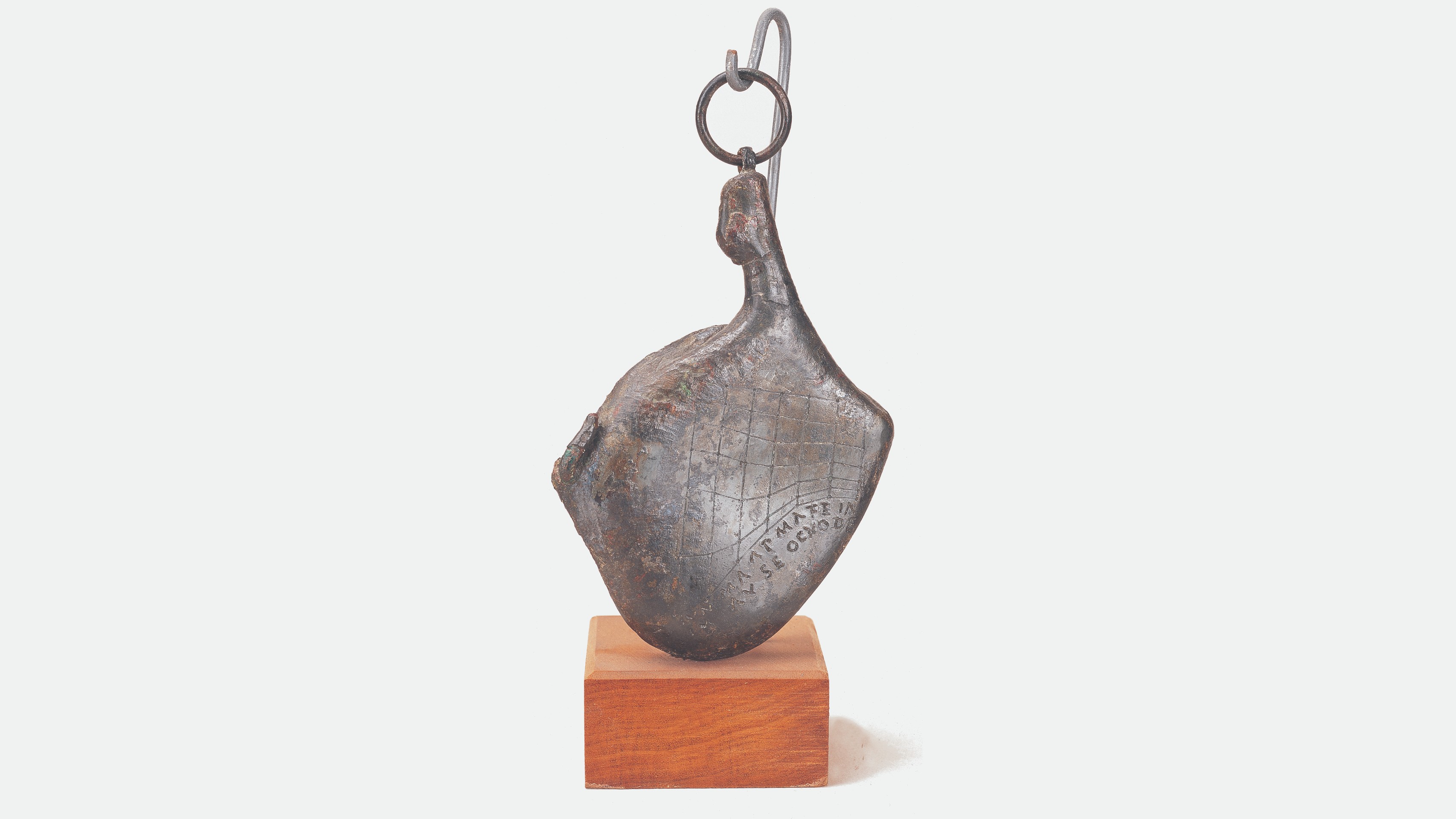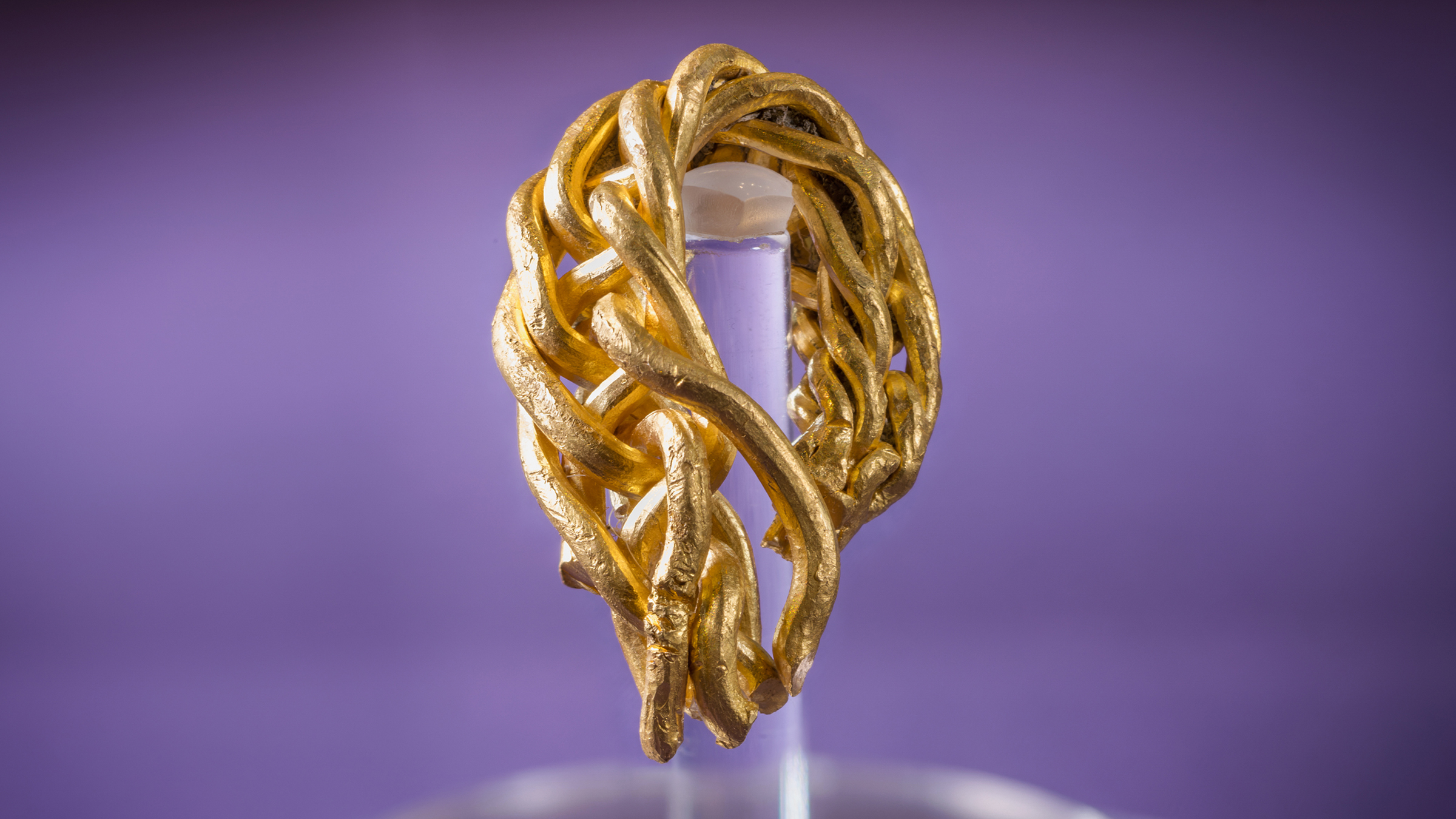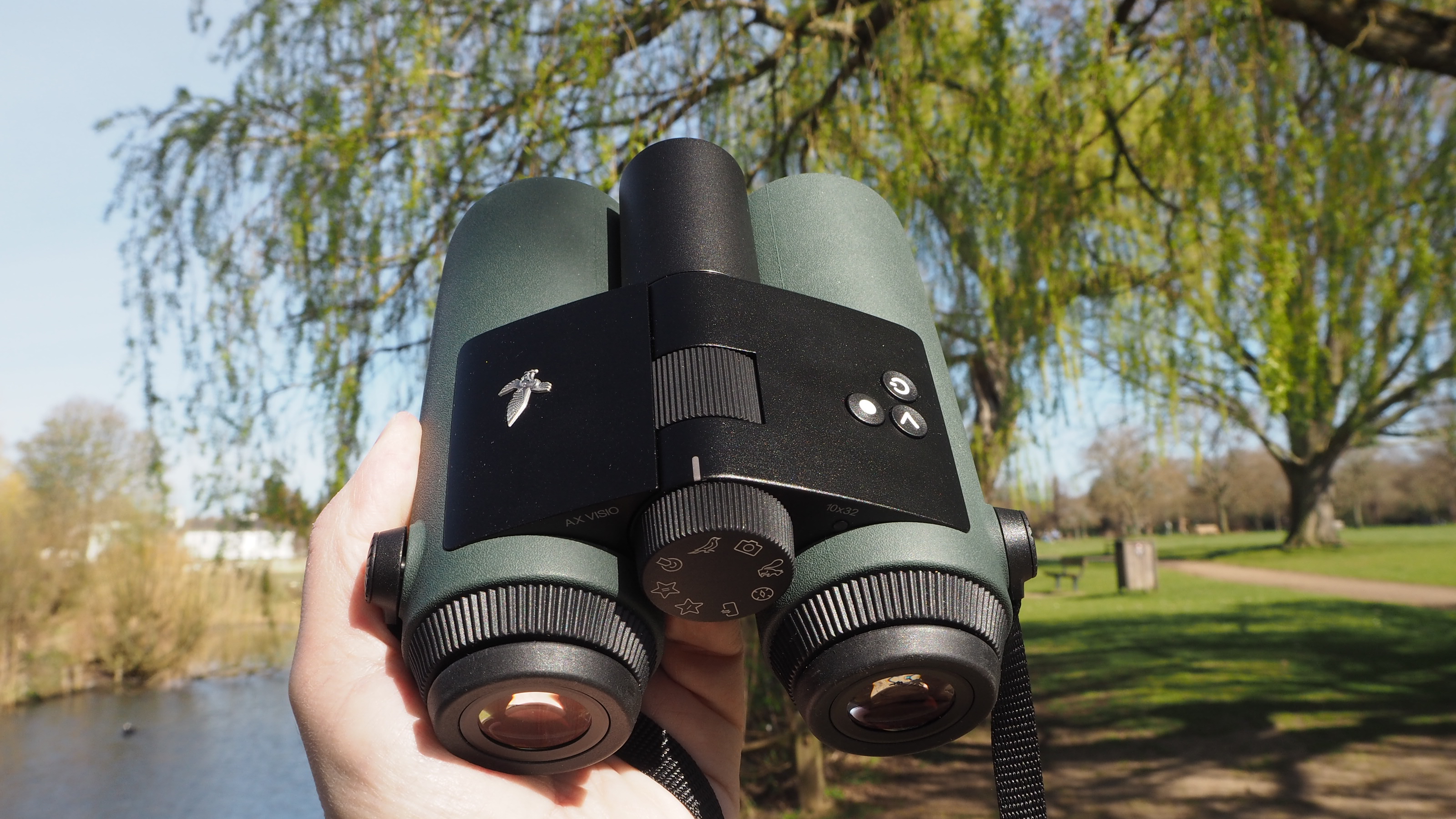Name: Prosciutto di Portici
What it is: A silver-plated bronze sundial
Where it is from: Herculaneum, near Naples, Italy
When it was made: Between 8 B.C. and A.D. 79
Related: Ram in the Thicket: A 4,500-year-old gold statue from the royal cemetery at Ur
What it tells us about the past:
In the shadow of Vesuvius, archaeologists discovered a pocket-sized bronze sundial in the shape of a ham in the summer of 1755. Nearly overlooked amidst the statues and charred scrolls buried at the Villa of the Papyri at Herculaneum, the “Prosciutto of Portici” is the earliest known Roman portable sundial.
The silver-coated bronze ham measures about 4.4 by 3 inches (11.3 by 7.8 centimeters). The body of the object is crisscrossed by incised lines, and a series of Latin letters graces the bottom right quadrant. On the left edge, a bronze stump indicates that the gnomon — the “hand” of a sundial — has broken off.
When 18th-century archaeologists stumbled on the object in their excavation tunnels under the municipality of Portici (later identified as the ancient town of Herculaneum) they initially thought it was a miniature ham sculpture with stripes. A closer examination revealed the object was a Roman sundial — a unique object that has been studied for more than two centuries.
According to Christopher Parslow, an archaeologist and art historian at Wesleyan University who published a book on the sundial in 2024, the horizontal lines indicate the number of hours before or after sunset; the seven vertical lines represent months of the zodiac calendar; and the letters below are abbreviations of the 12 months in the Roman calendar. Thanks to one of these abbreviations — AU for August — the sundial can be dated to some time after 8 B.C., when the Roman Senate officially renamed the month of Sextilis to Augustus in honor of the first emperor.
Sundials can be extremely accurate, but only if they are calibrated to a specific location. Based on the markings and the angle of the gnomon, which has since been lost but was originally recorded as being shaped like a pig’s tail, Gianni Ferrari, an ancient sundial expert, estimated in 2019 that the ham clock was calibrated for someone living around 41°N latitude — just about where Herculaneum is.
MORE ASTONISHING ARTIFACTS
Historians have long assumed that the owner of the Villa of the Papyri was L. Calpurnius Piso Caesoninus, the father-in-law of Julius Caesar, who likely commissioned the Epicurean philosopher Philodemus to draft the numerous charred scrolls that were recently “virtually unwrapped.” This may explain why the Roman pocketwatch was shaped like a ham. For adherents of Epicurean thought, the lowly pig was often used as a metaphor, as it was seen as a naturally pleasure-seeking creature.
Experts continue to debate how well the prosciutto sundial worked. While earlier scholars estimated an error of only a couple minutes, Ferrari found significantly higher errors, in the range of tens of minutes, in the object’s time-telling ability. And based on a 3D scan and reconstruction of the sundial, Parslow determined that the sundial could be used to tell time to the half or quarter hour. “The instrument probably was a mark of distinction and a jewel,” Ferrari wrote, “rather than being a precision instrument giving the correct time.”
This unique ancient “pork clock” was buried during the eruption of Mount Vesuvius in A.D. 79. It is on display at Italy’s National Archaeological Museum in Naples.














